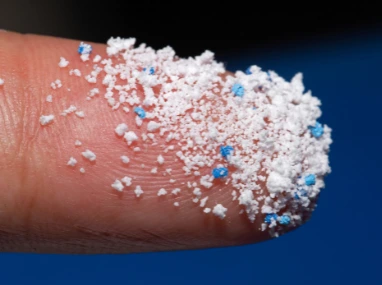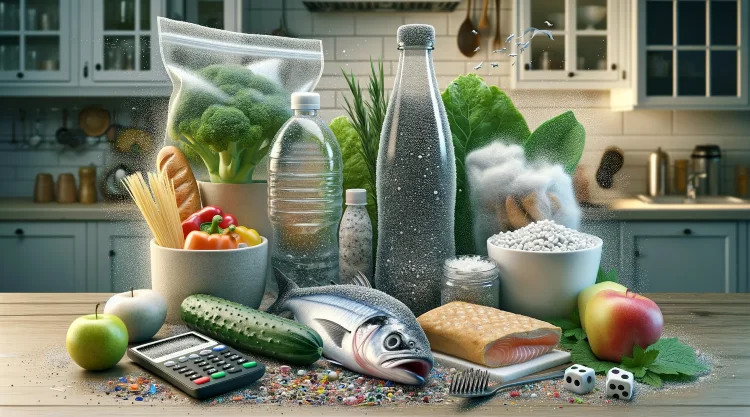A new study has revealed a startling presence of microplastics in many American foods. This study, by Ocean Conservancy and the University of Toronto, shows that almost 90% of various protein foods, including meats and plant-based options, contain these tiny particles.
Findings Unveiled
Researchers tested 16 types of foods like beef, chicken, seafood, and tofu. They found microplastics in a whopping 88% of the samples. “Highly processed products contained the most microplastics per gram,” according to the study. What’s more, the level of contamination was similar across different brands and store types.
The study estimates that the average U.S. adult consumes over 11,000 microplastics each year from these foods. In some cases, the annual intake could reach up to 3.8 million particles. Microplastics, less than five millimeters in size, and even smaller nanoplastics, could be ingested without us knowing.
Microplastics in Our Bodies
Recent research has found microplastics in various human organs, including blood and lungs. This study adds to the growing concern about how our food system might be contributing to this problem. Microplastics aren’t just in seafood; they’re in almost everything we eat.
The study’s results challenge the belief that microplastic contamination is only a seafood issue. Now, it’s clear that these particles are in the entire food system. “Maximum U.S. adult exposure from these proteins is ∼3.8 million microplastics/year,” says the study. “Mean U.S. adult exposure from consuming these proteins is >11,000 microplastics/year.”

But Can Microplastics Harm Us?
The study covered in detail where microplastics are found, and most media outlets are reporting these findings with the usual apocalyptic doom-and-gloom meant to drive eyeballs to the six-o’clock news. “The Murder Bees Are Almost Here!” That was over 25 years ago and guess what, they’re still not here.
So, as soon as this study was released, we went to work, determined to track down studies that demonstrate how microplastics physically harm us.
What exactly do they do to us when we ingest them?
There are no studies, not yet at least. Right now, the health impacts of microplastics on humans are a subject of ongoing research, and there’s no definitive consensus yet. While it’s true that microplastics have been found in various parts of the human body, including blood, lungs, and even placentas, the extent to which they cause harm, if at all, isn’t fully understood.
Some concerns relate to the physical presence of these particles in the body, which could potentially lead to inflammation or other immune responses, but that’s a theory with no proof.
There’s also the possibility that microplastics might carry harmful chemicals or pathogens into the body. These particles can absorb and transport various environmental pollutants, which might then be released into the body upon ingestion or inhalation.
But, considering the tiny nature of microplastics, we’re talking about an extremely tiny surface level. It would take either pounds of them or some very toxic substances to build up over time for it to overwhelm our bodies rather than simply be expelled like most other foreign substances that we ingest.
Which takes us to what many experts believe; that microplastics could pass through the human digestive system without being absorbed. The size, shape, and composition of the particles, as well as the individual’s health, are factors that might influence the potential for harm.
Further research is needed to understand the mechanisms by which microplastics might affect human health, the levels of exposure that might be harmful, and the potential long-term impacts. This is a rapidly evolving field of study, and new findings are emerging regularly. At this point in time, given the amount of data we have available to us, we can reach only two true and fact-supported conclusions:
More To Discover
- Bill Gates-Backed Bioscience Firm Will Release a Vital Palm Oil Substitute Called Palmless
- The Myth of Plastic Recycling: A Decades-Long Deception
- Bottled Water Industry Responds to Columbia University Study on Nanoplastics & They’re Not Wrong
- Tyson Foods Releases Over 370 Million Pounds of Pollutants into U.S. Waterways
- Our food supply, water and air would be healthier without the presence of microplastics.
- We have no medical research or autopsies to prove microplastics are a direct and current threat to human health.
Sometimes in life, fear does more damage than reality, so let’s not go all, “the sky is falling” just yet. We’ll save that reaction for when we have evidence to back up such a response.
Source: Environmental Pollution




















